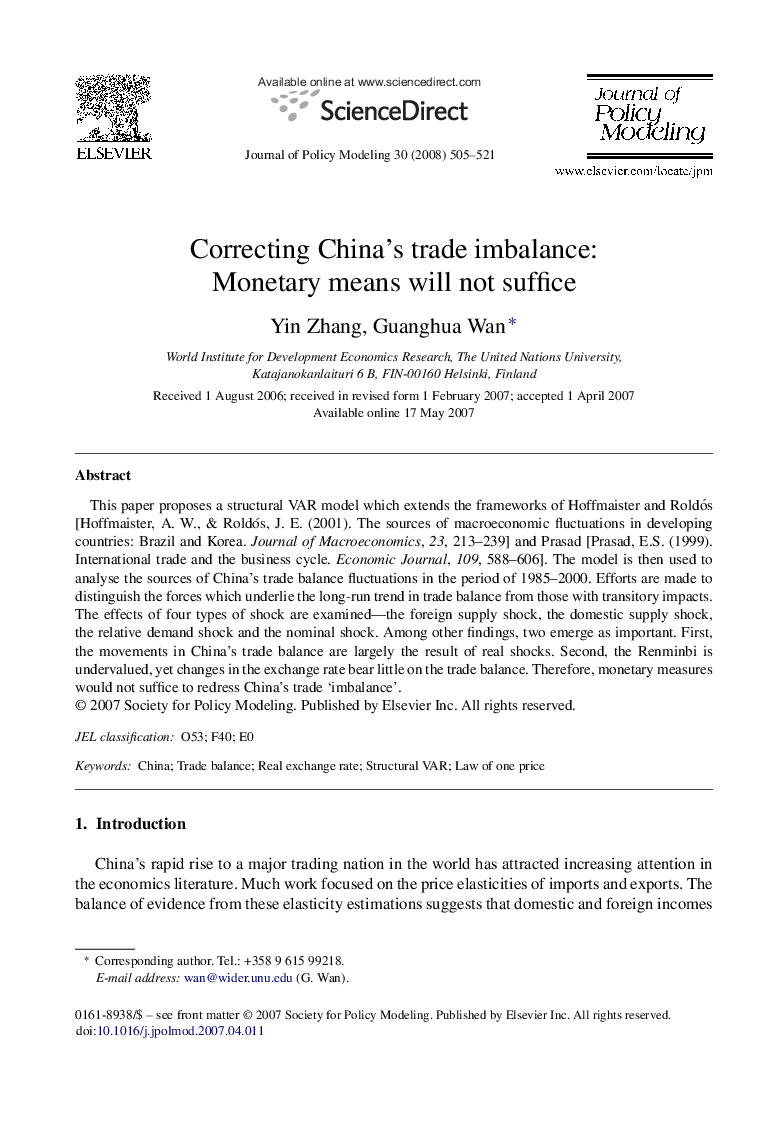| Article ID | Journal | Published Year | Pages | File Type |
|---|---|---|---|---|
| 968843 | Journal of Policy Modeling | 2008 | 17 Pages |
This paper proposes a structural VAR model which extends the frameworks of Hoffmaister and Roldós [Hoffmaister, A. W., & Roldós, J. E. (2001). The sources of macroeconomic fluctuations in developing countries: Brazil and Korea. Journal of Macroeconomics, 23, 213–239] and Prasad [Prasad, E.S. (1999). International trade and the business cycle. Economic Journal, 109, 588–606]. The model is then used to analyse the sources of China's trade balance fluctuations in the period of 1985–2000. Efforts are made to distinguish the forces which underlie the long-run trend in trade balance from those with transitory impacts. The effects of four types of shock are examined—the foreign supply shock, the domestic supply shock, the relative demand shock and the nominal shock. Among other findings, two emerge as important. First, the movements in China's trade balance are largely the result of real shocks. Second, the Renminbi is undervalued, yet changes in the exchange rate bear little on the trade balance. Therefore, monetary measures would not suffice to redress China's trade ‘imbalance’.
